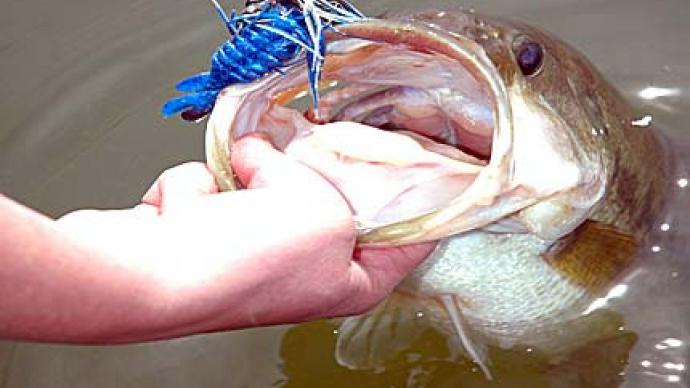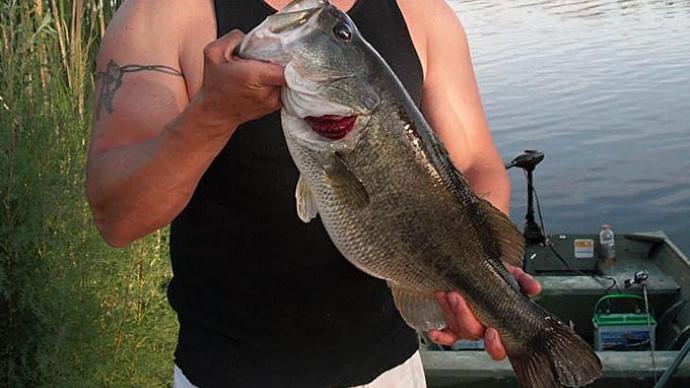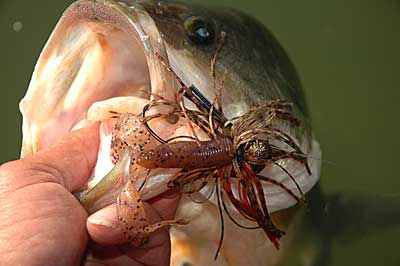
With the warming of early Spring, the water temperatures won't be high enough to flat out grab a crankbait to cover water, looking for signs of bass. Most of the time, you will have to be patient and break down areas piece-by-piece to see what they offer. Not only will bass activity start to climb with the warming temperatures and waters so will forage activity. In addition, craws will become more active and play a more significant part in what bass eat day in and day out.
With the colder water temperatures during the Winter months, craw activity was minimal, and they were a treat for the bass when they got a chance to eat one. Baitfish were really what the bass relied on and followed throughout the Winter months. With the upward conditions, they are also starting to become more active. With the stage set, let’s start to break down jig tactics to help you put more bass in your boat.
Jig Options
Bass fishermen have a sizable number of jigs to put into your jig box. I'll leave brands out of this and let you pick your favorite brands, as I'll refer to jig heads. When the early bite starts to take note, bass will be in deeper water conditions and depending on rock and weed edge areas to supply them with a food source.
Football Jigs

My first jig choice is the football jig because it will fish through rocks. You can say that the football jig pick takes care of two points at once. First, I break down the bottom conditions with my jig when fishing in rocks. Second, when trying to imitate craws, a football jig is the best jig to imitate the movements of craws. I'm also trying to play the emerging craw factor to trigger strikes.
For this presentation, I match my jig weight to the depth and cover I'm fishing. My primary selection in jig size for fishing these conditions is 1/2oz to 1oz. When fishing a football jig in the rocks, my goal is to feel my bait around the bottom, looking for better concentrations of rocks. These rock areas are crucial and will attract more bass, craws, and baitfish.
Once I have found a key rock area, I'll break these areas down further with extra care. Try to find out what color the craws are at this time of the year and match these colors with your skirts and trailers choices to help attract more bites. If you don't know what the color of the craws are, live well a bass or two to see if they will spit up craws in your well. Pay attention to what is spit up to help you match craws colors in your waters. The color could be a make-or-break point that will allow you to put more bass in your boat during your time on the water.
If you feel matching craws are driving the bite, rig your creature in the conventional matter (craw orientation), but if you feel the bass are keying in on baitfish, change the rigging orientation of your creature bait vertically (baitfish) instead of horizontally. I'll add a few blotches of chartreuse dye on the tips of the craws to add attraction and scent to the mix to give me a confidence booster. I feel it gets me more bites during my day on the water.
Transition Areas Rock To Weeds – Arky Jig
As the water warms, bass will move and leave the deeper water rocks and head shallower. I'll put down the football jig and switch to an Arky jig-style jig head when this happens. It's an excellent weed jig and can fill in like a rock jig when needed.
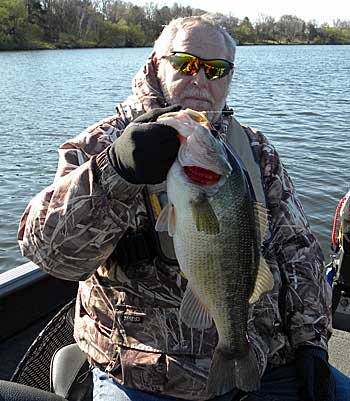
The reason behind the Arky jig head change is fishing applications. The Arky head shape is the best rock jig behind a football jig. The head is shaped to give you a flat surface and has a back-n-forth movement when fished on the rocks. It also comes through the weeds well, and in a pinch, it can be fished as a swim jig to cover all three jig presentation applications.
Rig your Arky with your favorite baitfish-colored skirt. In my case, I'll rig my jig with bluegill skirts as they are the primary forage in my part of the country. Play with your trailer orientation horizontally or vertically.
Here is another point that I want to add into the mix when considering trailer orientation: I'll consider bass activity when thinking trailer rigging. If I'm fishing early in the day, even though I'm imitating a baitfish, I may still rig my bait horizontally (craw orientation). The reason for this is that it will catch more water as my jig falls and slow the fall rate down, keeping my jig in the bite zone longer, keying more bites in the slightly cooler water temperatures in the morning.
Make sure that you cover all your bases when fishing the weed flats as this will be the location that the bass will hold, looking for food before they make their push into the shallows looking for a spawning partner and day-to-day food. It will also be where they will come back to and hold to ride out passing cold front conditions that will push them out of the shallows. If there is a decent food source and the needed cover for the bass, there is no reason for them to move deeper again back to the rocks unless their food source moves.
When fishing your jig, keep craws in the plan and use them when you find rocks mixed in with the weeds. If you find an undeveloped weed area with rocks, stop and fish in this area. These small, isolated rock spots that go unnoticed many times can pay big dividends when fished at this time of the season.
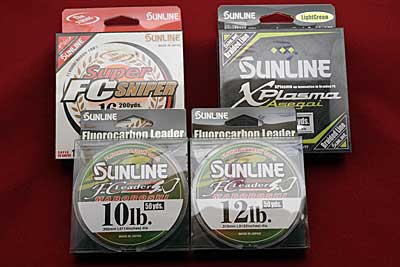
Also, later in the Spring, keep these areas on your checklist as they could very well serve as a big bass spawning spot. In addition, they can be a hidden gem in your rotation of spots to check when spawning time rolls around.
When paired with Arky jigs, trailers that I use are creature baits, craws, swimbaits, and double and single tail grubs. Do not be afraid to add color accents to these trailers to make them stand out a little and add scent.
Finesse Jigs
You will want to be armed with an assortment of finesse jigs in your jig collection when fishing in the early part of the season. I carry and fish finesse jigs during the Springtime for a few distinct reasons to trigger bites.
First, match the forage at this time of the season. Bass look at young forage or newly hatched forage in the waters as viable meals and an easy target.
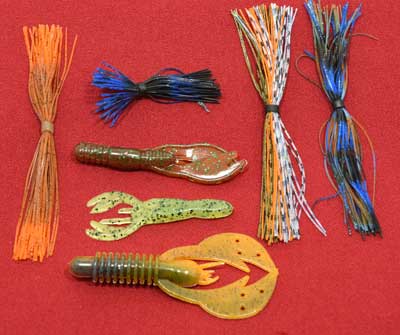
There are a couple of tweaks that I'll do to make these jigs stand out a little more to make them more visible and try to get them noticed. First, I will use forage-colored skirts with chartreuse and orange strands. I may also use a chartreuse craw or a regular-colored craw with both craws dipped in chartreuse dye. In some cases, I will also add rattles into the mix to use sound as another attractor to help trigger bites. If you're having a tough time finding a chartreuse craw, a 3" double tail craws work as a perfect substitute for this.
Jig Equipment
When fishing jigs, I'll use two baitcaster setups. First, I'll fish a 7’ MH Denali casting rod paired with a Lew’s reel spooled with 16lb Sunline Sniper FC. I'll use a 7’ Denali medium-action casting rod paired with a Lew's reel spooled with 20lb or 30lb Sunline Asegai braid for my second setup. I'll add a 10ft leader to my braid choice, 10lb Sunline Maboroshi FC for the finesse setup, and 12lb-14lb Sunline Maroboshi FC for the Arky jig setup. I use this braid setup when it is hard to feel the jig when faced with a tough bite or windy conditions.
I hope these early season jig patterns and tactics will help you catch more bass this Spring. During this time, bass move towards the shallows to eat and find a partner for the upcoming spawning season. By changing your jig tactics and matching them to the conditions that face you, you will be able to adapt and put bass in your boat.
BassResource may receive a portion of revenues if you make a purchase using a link above.


